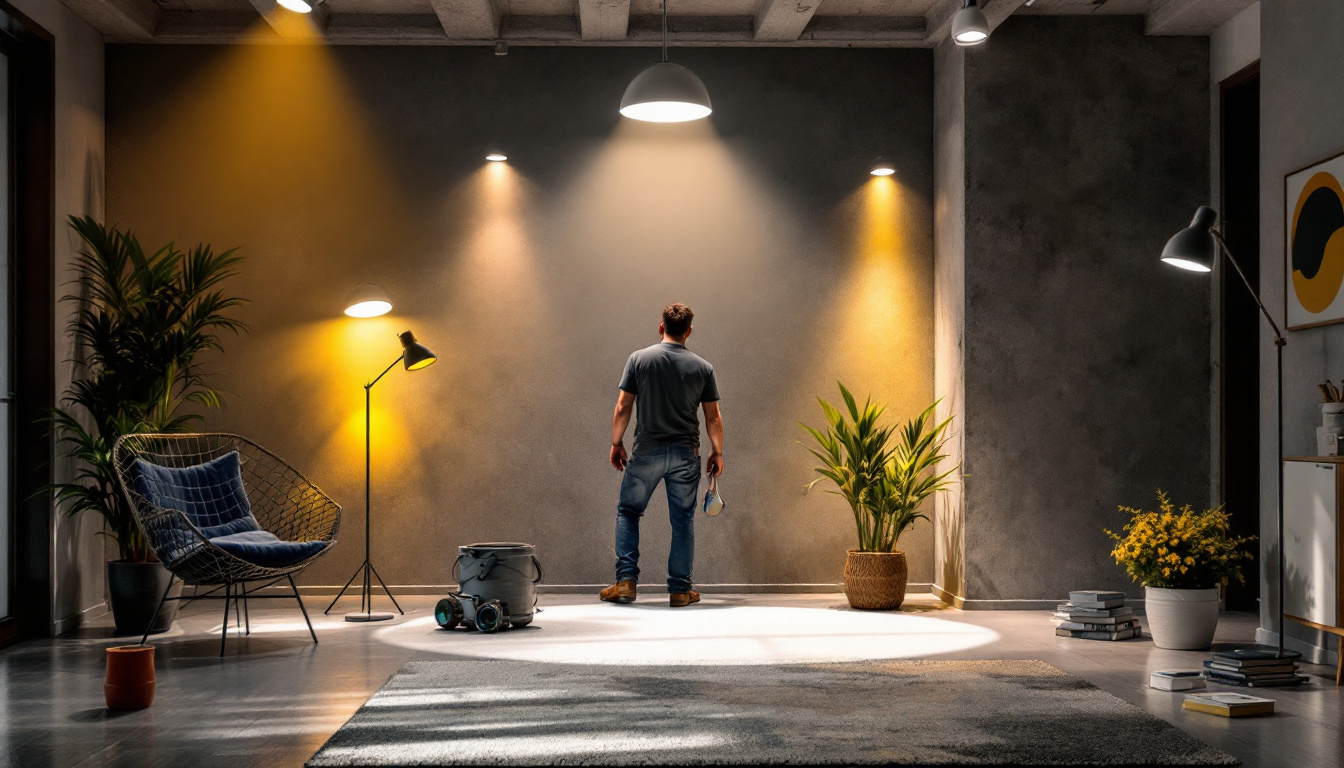
For lighting contractors, selecting the right components for a project is crucial to ensure both functionality and aesthetics. Among these components, 6 inch can light covers play a significant role in shaping the final lighting effect, protecting fixtures, and complying with safety standards.
Can lights, also known as recessed lights, are widely used in residential and commercial settings due to their sleek appearance and efficient illumination. The 6 inch size is one of the most common dimensions, striking a balance between brightness and subtlety. However, without the appropriate covers, these fixtures can fall short in performance and safety.
Choosing the right cover not only enhances the durability of the light fixture but also influences heat dissipation, light diffusion, and overall energy efficiency. For contractors, understanding the nuances of these covers ensures client satisfaction and adherence to building codes.
Moreover, the aesthetic appeal of a space can be significantly enhanced by the choice of can light covers. Available in various finishes, such as matte, glossy, or textured, these covers can complement the interior design theme of a room. For instance, a brushed nickel finish may add a modern touch to a contemporary space, while a vintage bronze cover could evoke a rustic charm. Additionally, some covers come with adjustable features that allow for directional lighting, making them versatile for highlighting artwork or architectural details.
Another important consideration is the material of the can light covers. Options range from plastic to metal, each offering distinct advantages. Metal covers are often more durable and can withstand higher temperatures, making them ideal for environments where heat buildup is a concern. On the other hand, plastic covers are typically lighter and can be easier to install, but may not provide the same level of heat resistance. Understanding these material properties helps contractors make informed decisions that align with the specific needs of their projects, ensuring both safety and aesthetic appeal are prioritized.
6 inch can light covers come in various materials, each offering unique advantages. Common materials include plastic, glass, and metal. Plastic covers are lightweight and cost-effective, making them suitable for budget-conscious projects. However, they may not withstand high temperatures as effectively as other materials. Additionally, plastic covers can be susceptible to yellowing over time, especially when exposed to direct sunlight, which may affect their aesthetic appeal.
Glass covers provide superior light diffusion and a polished look, ideal for upscale residential or commercial environments. They can be frosted, clear, or textured to achieve different lighting effects. The versatility of glass allows for creative lighting designs, such as using colored glass to create mood lighting or incorporating patterns that cast interesting shadows. Metal covers, often made from aluminum or steel, offer durability and excellent heat resistance, making them a preferred choice in industrial or high-traffic areas. Their robust nature ensures longevity, and many metal covers can be finished in various colors or textures to match the overall decor.
The design of the cover affects both the aesthetics and the light output. Reflective interiors can enhance brightness by directing light downward, while matte finishes help reduce glare. Some covers incorporate decorative elements that complement interior design themes, such as brushed nickel or bronze finishes. Furthermore, innovative designs now include adjustable features that allow users to change the angle of light, providing flexibility in how spaces are illuminated.
Contractors should consider the client’s style preferences and the room’s function when selecting covers. For example, a kitchen might benefit from covers that maximize brightness and minimize shadows, whereas a living room might prioritize softer, ambient lighting. In addition, the choice of cover can influence energy efficiency; LED-compatible designs can help reduce energy consumption while providing the desired illumination. As trends shift towards sustainable living, many manufacturers are now offering eco-friendly options that not only enhance aesthetics but also contribute to a greener environment.
One of the most critical factors in selecting can light covers is their ability to withstand heat generated by the bulbs. Many covers are rated for use with specific wattages and bulb types. Using a cover not rated for the fixture’s heat output can lead to warping, discoloration, or even fire hazards.
Contractors should always verify UL (Underwriters Laboratories) or equivalent safety certifications. These certifications ensure that the covers meet industry standards for fire resistance and electrical safety, providing peace of mind for both the installer and the client. Additionally, understanding the thermal management properties of the materials used in the covers can further enhance safety. For instance, covers made from high-temperature plastics or glass can offer better performance in high-wattage applications, ensuring that they remain intact and functional over time.
Not all can light covers are universally compatible. Some are designed specifically for LED bulbs, while others work better with incandescent or halogen bulbs. LED-compatible covers often include features that prevent overheating and allow for optimal light diffusion.
Additionally, the cover must fit securely onto the fixture to prevent dust accumulation and maintain a clean appearance. Contractors should check manufacturer specifications for size compatibility and installation requirements. It’s also worth noting that certain covers may come with adjustable features that allow for versatility in lighting design. For example, some covers can accommodate different bulb shapes or sizes, providing flexibility in achieving the desired ambiance or functionality in various spaces.
Time is money for contractors. Covers that are easy to install and remove can significantly reduce labor costs and improve project timelines. Snap-in designs or magnetic attachments are popular for their convenience.
Maintenance considerations are equally important. Covers that can be easily cleaned or replaced without dismantling the entire fixture help maintain lighting quality over time. This is especially relevant in commercial settings where lighting must remain consistent and reliable. Furthermore, some innovative designs incorporate self-cleaning materials or coatings that resist dust and grime buildup, making them ideal for high-traffic areas. This not only enhances the longevity of the covers but also contributes to a more aesthetically pleasing environment, ensuring that spaces remain bright and inviting without the constant need for upkeep.
Before installing covers, ensure that the recessed fixtures are properly wired and tested. Turn off power at the circuit breaker to avoid electrical hazards. Clean the fixture housing to remove dust and debris that could interfere with cover attachment.
Proper workspace lighting and tools, such as gloves and ladders, improve safety and efficiency during installation. Contractors should also review the cover manufacturer’s instructions to understand any unique installation steps.
Begin by aligning the cover with the fixture opening. For snap-in covers, gently press until the cover clicks into place, ensuring a flush fit. Magnetic covers should be centered carefully to avoid misalignment.
Verify that the cover is secure and does not wobble or shift. Turn the power back on and test the lighting to confirm that the cover does not interfere with bulb operation or light distribution.
Occasionally, covers may not fit properly due to slight variations in fixture dimensions or manufacturing tolerances. In such cases, contractors might need to source covers from the original fixture manufacturer or select adjustable options.
Another challenge is ensuring that covers do not trap heat, especially when used with high-wattage bulbs. Using LED bulbs, which generate less heat, or covers with ventilation features can mitigate this issue.
Dust and grime can accumulate on can light covers, diminishing light output and affecting appearance. Regular cleaning with a soft cloth and mild detergent helps maintain clarity and brightness. Avoid abrasive cleaners that can scratch or cloud the cover surface.
Periodic inspection for cracks, discoloration, or warping is essential. Damaged covers should be replaced promptly to maintain safety and performance.
If a cover becomes loose or falls off, check for damage to the attachment mechanism. Replacement covers or clips may be necessary. In cases of overheating, verify that the bulb wattage matches the cover’s specifications and consider switching to LED alternatives.
Flickering or uneven lighting may indicate poor cover fit or bulb issues. Re-securing the cover and testing with a new bulb can help isolate the problem.
Lighting contractors must ensure that all installed components, including can light covers, comply with local building codes and energy efficiency standards. Many jurisdictions have specific requirements for recessed lighting to prevent fire hazards and improve energy conservation.
Using covers that meet ENERGY STAR® criteria or similar certifications can contribute to project compliance and enhance client satisfaction through reduced energy costs.
Selecting covers made from recyclable or sustainable materials aligns with growing environmental awareness in the construction industry. Additionally, covers designed to optimize LED performance support broader efforts to reduce carbon footprints.
Contractors who prioritize eco-friendly options can differentiate their services and appeal to environmentally conscious clients.
For lighting contractors, 6 inch can light covers are more than just accessories; they are integral to the success of any recessed lighting installation. Understanding the types, features, and installation techniques ensures that projects meet safety standards, client expectations, and aesthetic goals.
By following this comprehensive checklist, contractors can confidently select covers that enhance lighting quality, protect fixtures, and comply with regulations. Investing time in choosing the right covers ultimately leads to smoother installations, fewer callbacks, and satisfied customers.
Ready to elevate your lighting projects with the highest quality 6 inch can light covers? Look no further than LumenWholesale, where we offer an exceptional range of spec-grade lighting products designed to meet your every need. With our competitive wholesale pricing and commitment to cutting out the middleman, you can trust that you’re getting the best value for your investment. Plus, with free shipping on bulk orders, you can stock up on superior lighting solutions without worrying about extra costs. Don’t compromise on quality or price. Visit LumenWholesale today and discover the ideal blend of durability, performance, and affordability for your next lighting installation.

Discover expert insights and best practices for selecting and installing lights for can lights in this comprehensive guide tailored for lighting contractors.

Discover how choosing LED light bulbs made in the USA can enhance your lighting contracting business.

Discover essential strategies and expert tips for lighting contractors to master electric cords, enhance project efficiency, and ensure safety.

Discover the benefits of LED alternatives to fluorescent tubes and learn how lighting contractors can maximize success with energy-efficient solutions.